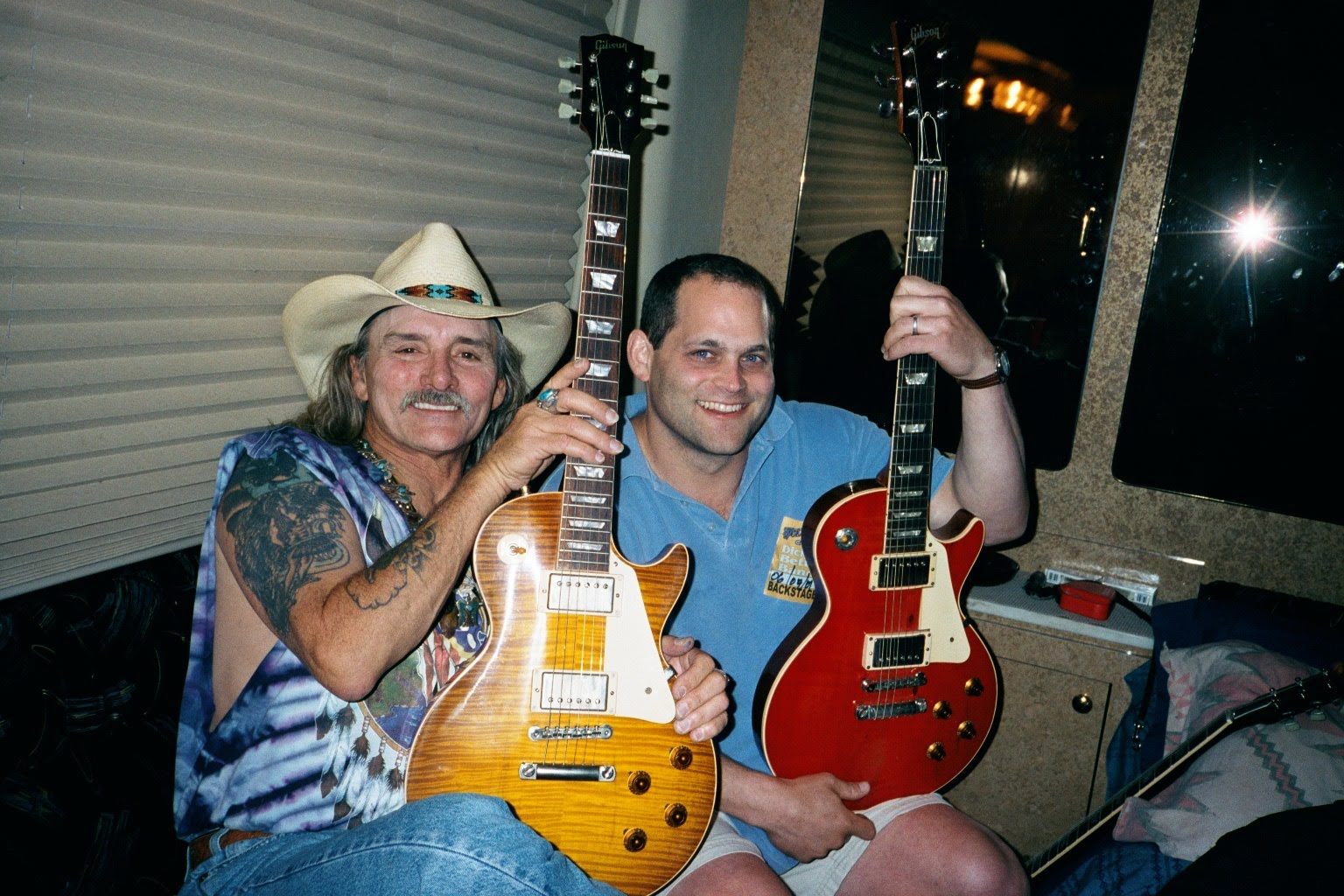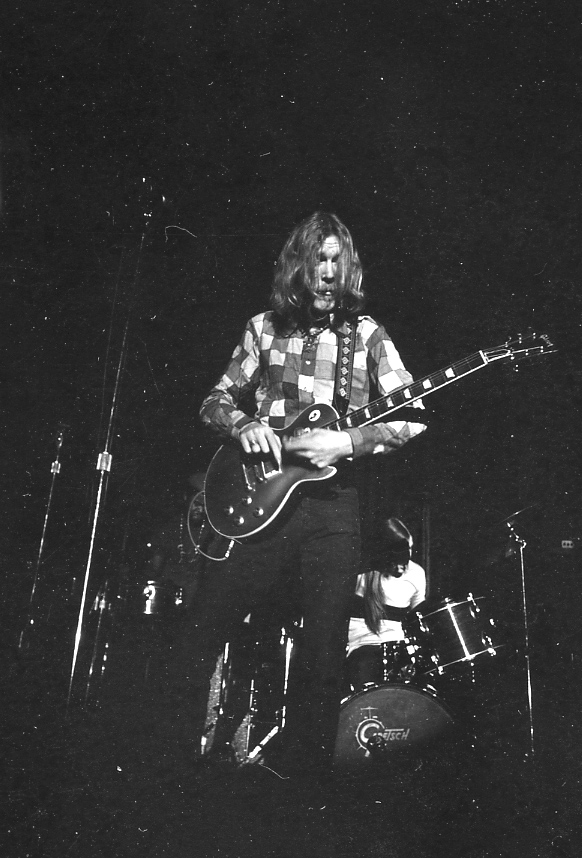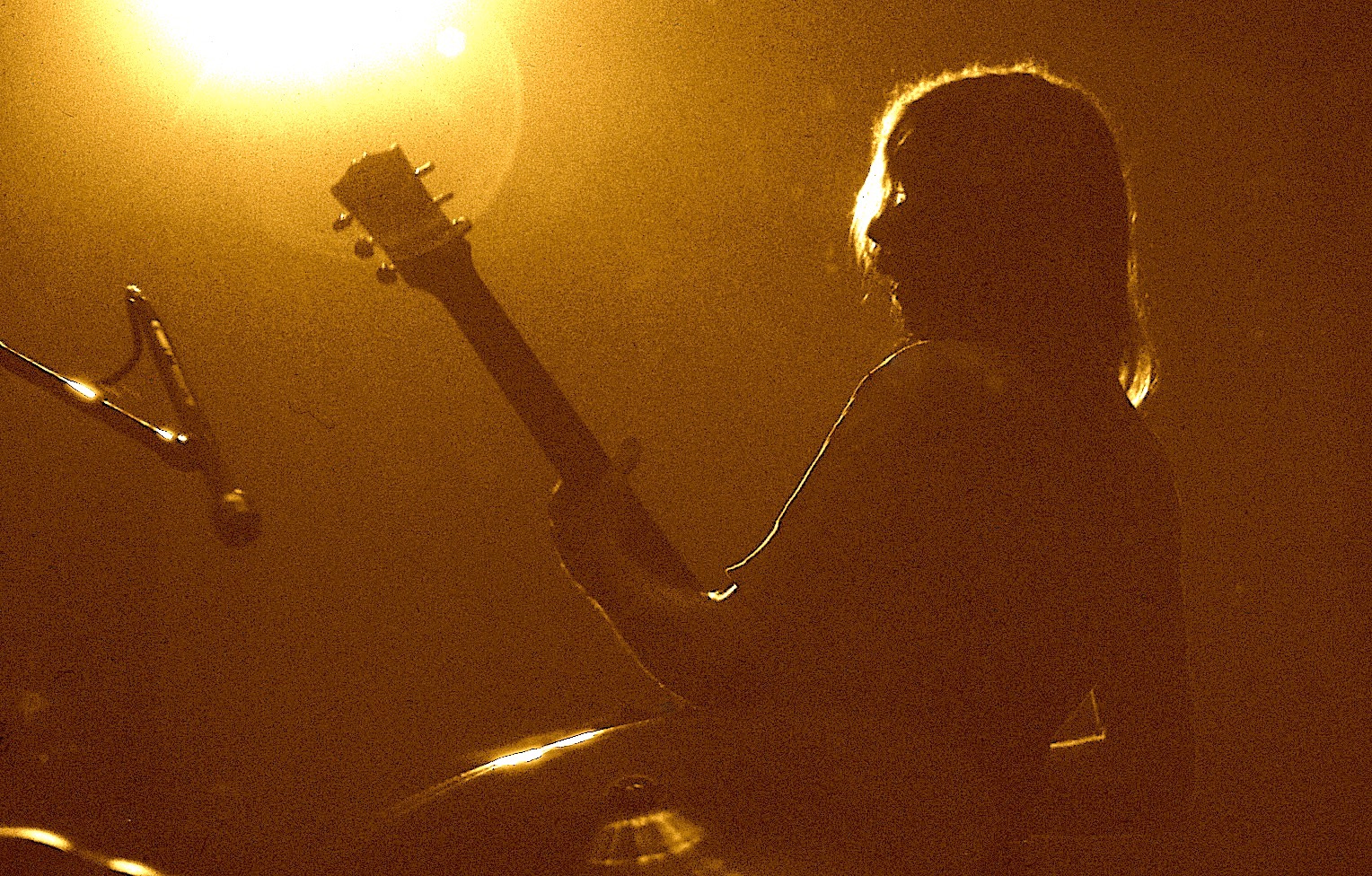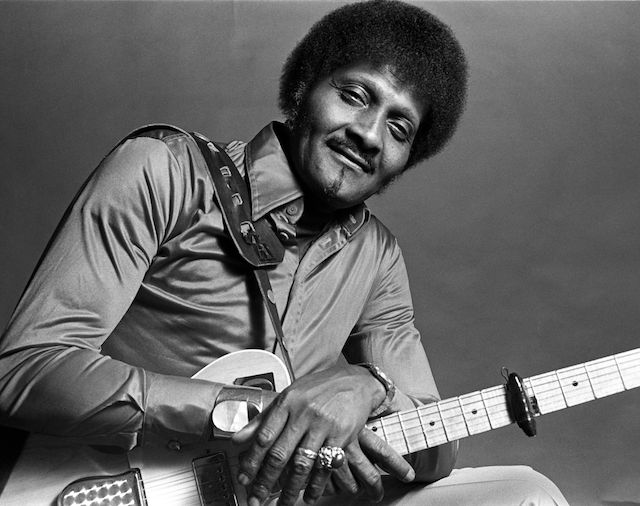From the archives: Dickey Betts and his custom Gibsons
In 2001, I went out to Long Island to introduce Dickey Betts to Andy Aledort, who would be working with him on a column for Guitar World. Dickey only wanted to do interviews with me, but I assured him that if he met Andy he would love him. That was the beginning of a beautiful friendship; Andy has now been playing with Dickey for about 8 years.
After we did the interview at Dickey’s hotel room, we hung out all night and eventually outside the Westbury Music Fair, where he would be performing, Dickey showed us the prototypes of his upcoming Gibson signature guitars. Here’s the story I wrote.

Dickey showing off the prototypes on his bus, 2001. Rare time when a photo captures the interview. Photo by Andy Aledort.
“Look at this thing, man! It’s beautiful!” Dickey Betts stands in the back bedroom of his tour bus and thrusts forward a gorgeous Gold top. If you didn’t know better, you’d swear it was Goldie, his famous ’57 Les Paul which he played in the Allman Brothers Band for over 20 years. Except that Goldie is, in fact, sitting just a few feet away and is actually no longer gold. (More on that in a moment.)
“This is a ’57 reissue from the Gibson Custom Shop, a prototype of my signature guitar, and it’s a great instrument,” Betts says. “People don’t have to spend 25 or 30 grand to get a vintage guitar any more. This is just as good and I’m very proud that it is going to have my name on it.”
The Dickey Betts Signature Series will eventually feature two models. The first one, an “aged” ’57 reissue Gold top based on the instrument Betts proudly showed off, was introduced in July. Each of them is made in the Gibson Custom Shop then hand-finished by Tom Murphy, a luthier famous for his uncanny ability to match a vintage finish. Vintage lovers will be overwhelmed by the guitars’ uncanny resemblance to a decades-old instrument, but for Betts esthetics are a distant second to playability.
“What I care about is how a guitar sounds and feels and as soon as I picked a few notes unplugged on this, I knew it was a great one,” Betts says. “It’s got great wood and a great finish, which lets the sound ring rather than stifling it. I think I might actually like it more than Goldie now.”
Oddly, Goldie is now a beautiful redtop since Betts himself stripped it and refinished it several years ago. “It had been really worn down by all the use and I just decided to make it how I wanted it,” Betts explains. “Some people think it’s nuts to do something like this to such a valuable guitar, but it’s a working tool for me.”
Betts also recurved the pickguard by hand to better suit his needs, then lowered its profile. He dressed up the hardware by adding a sterling silver Indian belt buckle to the input jack and a silver ring to the toggle switch cover. All of this will be recaptured on the second line of Dickey Betts signature guitars.
“We are going to take Goldie to the shop and put the micrometers on it,” says Rick Gembar, general manager of Gibson’s Custom Shop. “The Dickey Betts redtop will feature all the little things particular to his instrument. These are some of the ultimate guitars on the planet.”








Hi there,
I bought an orange Dickey Betts reissue about 8 yrs ago. I bought it used but in perfect shape. It has all the candy and the silver buckle, signature etc. It is an unbelievable guitar to play.
The headstock was snapped off by Virgin Airlines. They paid for it and I went and had it glued back together. So now I own a worthless beautiful guitar that plays great (still).
What is the story with the orange color as I heard he painted Goldie red?
How many were made?
Thx
PB